Onibaba and the Roots of Evil
Toho
The film opens from a pit in the earth. The camera pans over rippling grasses until it reaches this hole. When the camera settles, the hole looks like a mouth, a wrinkle in the grasses above it approximating cartoon villain eyes, maybe. Then it cuts to view from below, black and white reverse, and text appears in Japanese on screen, subtitles calling this “a dark passageway from ancient times to the present.” Suddenly, to dramatic music, the title flashes on screen, Onibaba. Translating to demon-woman or demon-hag, the title almost suggests this demon woman is of this hole.
A retelling of a Japanese fable, Kaneto Shindo’s Onibaba follows two women waiting out the war in the plains of fourteenth-century Japan. To survive, the women have been killing men lost in the fields and trading their gear for food. The bodies, they feed into the pit, and at night they retreat beneath the thatched roof of their hut, ravenously eating before stripping into bed together.
Early on, their neighbor Hachi returns. Depleted and famished, he barely escaped the war with his life, and he comes to break the news to the women that Kishi—the older woman’s son, the younger woman’s husband—has died. The younger sobs inconsolably. She’s heartbroken.
The film is shot beautifully in black and white, light pouring through steam and smoke inside their hut at night when Hachi recounts tales of the war. By day, by night, the fields ripple with motion like sea anemones, a singular organism alive and undulating. While the world beyond spits shelter-seeking samurais into their fields, the world of the film is contained by the women’s home, the river, Hachi’s home, and Ushi’s, where they trade their wares. Thus develops a sense of their dependence on this land.
Onibaba is from 1964, but it’s hard not to see this as a climate story. The previous summer, hail and frost struck their fields. The crops failed. A solar eclipse portended the overturn of their world with war and hunger.
All around them a sort of hunger stalks. The older woman tells her daughter-in-law that Hachi is lusting for her “like a dog.” The film replicates his lust, suturing the younger woman on screen—the sway of her hips, skin pouring out of her clothing while she’s working at the river. Hachi repeatedly propositions her, and she ignores him. Because of the cinematography and the younger woman’s responses, I held my breath, anticipating a familiar story of violence, the male gaze.
Instead, she seeks him out. She slips out of her mother-in-law’s bed at night and sprints through the grasses until she reaches Hachi’s home. They begin sleeping together, night after night, her nocturnal sprints these eruptions of joy, life, and fear. She hungers for something too.
In the world of fables, set in ancient Japan, the film thrums on an instinctual level, the horror neat, the drama human. The web of climate, war, and desire feels apparent but slightly inaccessible, lodging me on the edge of the couch. Onibaba doesn’t need the jump scares and CGI of horror films today. Without the smoke and mirrors, the drama at its core must be thicker, and its power to unsettle persists.
The questions the film seems to be asking are rich, timeless: in times of disaster, who will we ultimately be loyal to? What do we owe to those who remain, to our secondary connections? How deep are the ties that bind us? Everybody feels it—Hachi fighting a generals’ war, the younger and older women renegotiating their obligations to each other now that Kishi is gone. And underneath this, I asked myself again and again, where does the film believe the horror is located? Is there someone to blame? Can it be so neat?
Unfortunately for the younger woman, her mother-in-law is also driven by hunger: she wants control. She needs her daughter-in-law to help kill people and implores Hachi to leave her alone. Once the war ends, she’ll be able to farm and can be independent, but until then, she needs her. Hachi refuses.
So instead, at night she tries to scare her daughter-in-law with stories of hell, demons, punishment for lust and sex. The young woman is undeterred. The rift between them widens.
⦿
The film takes a turn when a samurai appears at night. Abandoned by the younger woman for a nighttime tryst with Hachi, the older woman retreats in fear. The samurai wears an oni mask and asks her for passage through the fields towards his home in Kyoto. Harboring a fear of demons and hell herself, she agrees. As they walk, he tells her he’s worn the mask to protect his handsome face in war. She asks to see it before he goes—she hasn't seen anything beautiful since she was born—but he refuses. She leads him to his demise, a slip into the pit. She spelunks into the pit, passing over skeletons to wrench the mask from his corpse. This she will use to scare her daughter-in-law into submission. She will become the demons of her nightmares, so when her daughter-in-law sprints through the fields at night, she doubles back in terror when an oni stretches its arms wide.
In Onibaba, humans manufacture the horrors of their world. And yet, when they push too far, a slip of surrealism intercedes. In a film so tidy and fundamental, I can’t help but see the analogs to our world. What will happen when someone believes they know what’s best for someone else’s life? When they put on a demon mask at night to instill fear? And I find myself wondering where the pit is, what will happen when the fear-monger tries to take off the mask.

